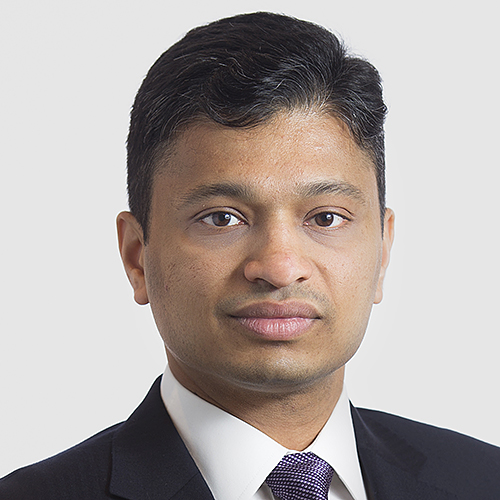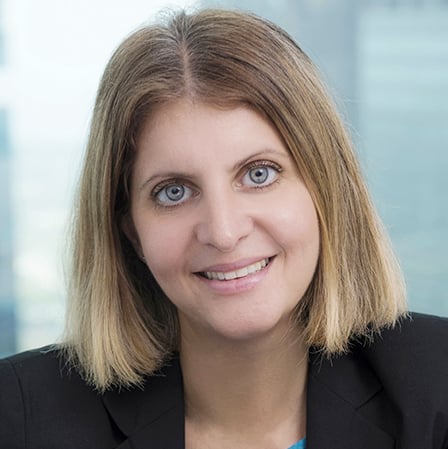Speakers:
John Groesbeek
head syndications - Asia Pacific, International Finance Corporation
head syndications - Asia Pacific, International Finance Corporation
Kian Min Low
chief development officer, JERA Asia
chief development officer, JERA Asia
Assaad Razzouk
group CEO, Sindicatum Renewable Energy
group CEO, Sindicatum Renewable Energy
Sunil Gupta
regional head of Southeast Asia and South Asia, Vena Energy
regional head of Southeast Asia and South Asia, Vena Energy
Steve Mercieca
executive director, project & export finance, Standard Chartered
executive director, project & export finance, Standard Chartered
Mukesh Sharda
managing partner, Capital Square Partners
managing partner, Capital Square Partners
Premod Thomas
head of corporate strategy, Clifford Capital
head of corporate strategy, Clifford Capital
James Chern
managing director, I Squared Capital
managing director, I Squared Capital
Sharad Somani
partner and head of infrastructure advisory, KPMG
partner and head of infrastructure advisory, KPMG
Wee Meng Thoo
head of investments, TMT sector, Leonie Hill Capital
head of investments, TMT sector, Leonie Hill Capital
Rahim Khawaja
head of capital market solutions, global structured finance, investment banking department, Asia, Sumitomo Mitsui Banking Corporation
head of capital market solutions, global structured finance, investment banking department, Asia, Sumitomo Mitsui Banking Corporation
Marc Freydefont
global head of securitized product & solutions sales, Standard Chartered
global head of securitized product & solutions sales, Standard Chartered
Eduardo Francisco
president, BDO Capital & Investment Corporation
president, BDO Capital & Investment Corporation
Boo Hock Khoo,
former vice president, operations, Credit Guarantee and Investment Facility (CGIF)
former vice president, operations, Credit Guarantee and Investment Facility (CGIF)
Sajal Kishore
head of Asia Pacific, infrastructure & project finance, Fitch Ratings
head of Asia Pacific, infrastructure & project finance, Fitch Ratings
Seth Tan
executive director, Infrastructure Asia
executive director, Infrastructure Asia
Armand Hermawan
president director, PT Penjamin Infrastruktur Indonesia
president director, PT Penjamin Infrastruktur Indonesia
Luca Tonello,
head of Asia global structured finance, investment banking department, Asia, Sumitomo Mitsui Banking Corporation
head of Asia global structured finance, investment banking department, Asia, Sumitomo Mitsui Banking Corporation
Moderators:
Daniel Yu
editor-in-chief, The Asset
editor-in-chief, The Asset
Chito Santiago
managing editor, The Asset
managing editor, The Asset
Premod Thomas, head of corporate strategy, Clifford Capital, believes the trends that are driving this inflection towards institutional sourcing of capital is that traditional providers of long-term project finance debt such as governments and commercial banks, are becoming increasingly constrained - governments by budgetary constraints and banks primarily by regulatory constraints.
James Chern, managing director, I Squared Capital, says he “looks at it slightly differently in the sense that there is always a lot of capital and a lot of projects out there, but you always have capital going after similar projects with the same checkboxes. So as a result, what is considered bankable or attractive is always similar for both equity and the investor sometimes.”
The gap between what the governments and banks can finance and what is required is quite large yet it is concentrated in certain types of projects.
With the bulk of infrastructure investments in Asia - up to 70% - done by governments or entities such as banks, Marc Freydefont, global head, securitized products and solutions sales, Standard Chartered, says, “I would talk about an inflection point when that starts to go down and that 70% goes to 60% or 50%. But for now, we have yet to see evidence of that going down.”
Sharad Somani, partner and head of infrastructure advisory, KPMG, adds, “We are still a few years away from the inflection point, and although we have started sowing the seeds, the shoots are yet to be seen. We are seeing a couple here and there, to my mind that is an exception.”
“The bulk of the projects are getting funded by banks – 90% of project finance is banks – and public sector SOEs are playing an extremely important role in infrastructure delivery and those institutions are going to the market and raising bonds,” continues Somani.
Although the number of infrastructure deals getting funded right now is quite large, Rahim Khawaja, head of capital market solutions, global structured finance, investment banking department, Asia, Sumitomo Mitsui Banking Corporation, says, “In the short term we will definitely see the banks continue financing. The fact that only about 5%-10% at most is being funded in the capital markets, it is far from an inflection point.”
The Skyway project in the Philippines is a case in point. “We actually bought convertible debt and then converted that debt into equity, which gave us 55% ownership of the toll road. We managed to generate 8-9 times on our equity return. But it required 5-6 years of hard work where we had to extend and construct more roads, and we had to raise additional capital of about US$275 million and implement that. Finally, we exited and we worked with the government a lot in terms of increasing the tariff - it was a very complex deal,” says Mukesh Sharda, managing partner, Capital Square Partners.
“It was a one-off situation and that type of returns, I do not see that in toll roads or infrastructure right now,” adds Sharda.
In terms of securing local financing, there are some concerns that centre more on the capacity of local institutions to take on risk.
Somani says, “Infrastructure in most countries has to be funded locally. The ADB has got a line of financing, for local financing, which is made available to certain levels. So the challenge is how do you get local institutions and local financing comfortable with the construction risk that is inherent in all infrastructure greenfield projects. So, the bigger challenge is the capacity of the local institutions, rather than the availability at this stage.”
At the same time, returns on traditional infrastructure projects have gone down.
In terms of the traditional infrastructure, toll roads, power - the pricing of these assets and the returns from the equity investor perspective have gone down with the significant amount of money that has been raised.
“Private equity in Asia manages about US$900 billion out of a total of US$4 trillion of private equity globally. So in Asia the total deployed money is very high - and the total quantum of debt and equity that is going into infrastructure, the returns from some of these infrastructure investments have started to come down,” says Sharda.
There is a shift in the underlying definition of what is considered infrastructure - social infrastructure opportunities offer attractive returns such as in healthcare, education, and logistics.
There is a lot of data, information which is becoming what is called digital infrastructure.
“Infrastructure in Asia has reached an inflection point and if you see the total quantum of the capital that is deployed in private equity, not just in infrastructure, it is very high right now. There are lots of opportunities in social infrastructure,” says Thomas.
Sharda notes that, “If you invest in infrastructure projects in the developed world you get to bring in 6-8% IRR. If you invest in the developing world, you get barely double digits, maybe 10-11% - so a bunch of funds that require higher returns are getting into social infrastructure where the returns are very attractive.”
He sees the education sector, healthcare, logistics, and data warehouse management as the types of infrastructure projects where one is able to see the returns needed to justify an equity investment.
“These days, for the private equity style funds, a 2.5x return over a 4-5 year time period is what most of the investors would target. They would be okay with 2x, so at least you have to look at 2x which means the return criteria would have to get within 18-20%. That is hard to justify in traditional infrastructure. On the other hand, you can still get it and generate those kinds of returns on social infrastructure, provided you get the entry valuation right,” he says.
One of the most exciting developments last year was the conclusion of the first collateralized loan obligation (CLO) underpinned by project finance loans.
A collateralized loan obligation takes several project loans, puts them all together, wraps them into a note format, and then sells it.
The objective is to help banks get rid of some assets that would make their balance sheets more efficient.
Thomas explains that “the purpose is not to compete with banks. In no way is the platform meant to be competitive, it is meant to be complimentary. The objective is to take over loans that have been on the balance sheet of banks for 3-5 years - in other words, loans that have become brownfield.”
“The construction risk is behind them and, therefore, there is a significant de-risking in the credit profile. The objective is quite clear – it is to take brownfield loans off the balance sheet of banks and hold them for that long period, 5-20 years, where banks really have no interest and frankly it makes no sense being on their balance sheets,” explains Thomas.
“We bought the loans together and then tranched them. We tranched our pool of US$458 million into four classes of notes, Classes A, B and C, and then there was a residue equity piece which we as the sponsor held all the way to maturity. Tranche A was Triple-A rated security – what that really means is the very highest level clearly had the benefit on the first claim on cash flows of the underlying pool,” Thomas continues.
Freydefont notes “one key fact was that these transaction had three classes of notes, which were rated by Moody’s. So the rating agency angle was key in the process because without having a rating on the Triple-A, Double-A and Triple-B notes, the marketing exercise would have been difficult.”
Thomas sees interest from investors growing.
“There has been a lot of reverse enquiry type activity, and our bank partners are in the process of creating markets. We think with more supply coming in, there is a potential for these notes to be traded in the secondary market. They are listed on the Singapore Stock Exchange (SGX),” he says.
Wee Meng Thoo, head of investments, TMT sector, Leonie Hill Capital, says, “Today, everybody is talking about IoT, robotics - so what does it mean? We are still learning how to measure that technology output that will be able to increase the efficiency of the asset, and I think this will be evolving.”
“Data is the new oil, and I think all of us have to really learn how are we going to invest in data, because our strategy to invest is not to really look at bringing the technology into operation. I think what we are looking at is the vision statement - how the infrastructure sector of 10 years, 20 years is going to evolve, and how the consumer is going to consume those infrastructure,” Wee concludes.





.jpg)
.jpg)


